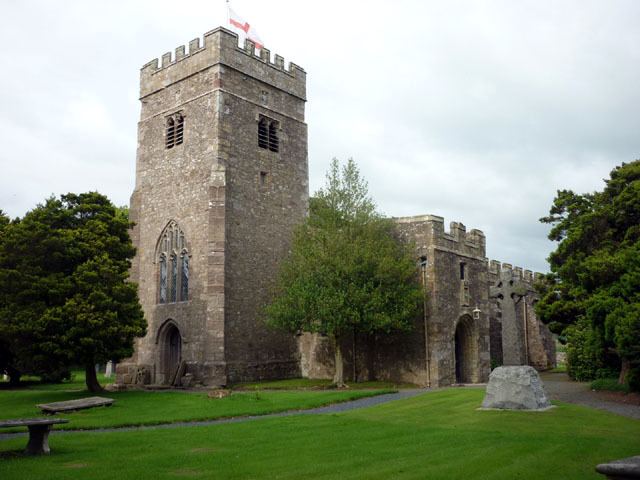OS grid reference SD 614,739 Country England Phone +44 15242 74376 | Denomination Anglican Capacity 250 | |
 | ||
Website St John the Baptist, Tunstall Architect Sharpe, Paley and Austin (restoration) Similar St Wilfrid's Church - Melling, St Peter's Church - Leck, St John the Baptist's Church - A, Church of St James the Less, St Mary's Church - Borwick | ||
St John the Baptist Church is located to the northeast of the village of Tunstall, Lancashire, England. It is an active Anglican parish church in the united benefice of East Lonsdale, in the deanery of Tunstall, the archdeaconry of Lancaster and the diocese of Blackburn. The benefice of East Lonsdale combines this church with St Peter, Leck, St Wilfrid, Melling, St James the Less, Tatham, The Good Shepherd, Lowgill, and Holy Trinity, Wray. The church is recorded in the National Heritage List for England as a designated Grade I listed building.
Contents
History
A church at Tunstall is recorded in the Domesday survey but the oldest structure in the present church dates from the 13th century. The church was rebuilt around 1415 by Sir Thomas Tunstal. Alterations were made to the church in the 16th century. In the 1820s it was attended by the Brontë sisters during the time they were receiving education at the Clergy Daughters' School at nearby Cowan Bridge. In 1907 the church was restored by the Lancaster architects Austin and Paley; this included re-roofing the church, enlarging the organ chamber, and adding a vestry, at a cost of about £1,000 (equivalent to £100,000 in 2015).
Exterior
The church is built in sandstone rubble with a slate roof. Its plan consists of a west tower, a nave and chancel under a continuous roof, north and south aisles, and a two-storey south porch. The tower has diagonal buttresses and an embattled parapet. Above each of the small bell openings is a carved tablet of an angel holding a shield. The west door has a pointed head above which is a three-light window with Perpendicular tracery. The aisles have embattled parapets, as does the porch. Above the door of the porch is a niche with a sundial plate and above that a small one-light window.
Interior
Internally the responds of the north arcade have early 13th-century capitals and the west lancet windows of the north aisle are probably also from this century. Dating from the 1907 restoration are the roof, and the chancel screen. A Roman votive stone has been built into the surround of a window in the north aisle. At the east end of the south aisle is a chapel known as the Chapel of the Holy Trinity. In the chapel is a mutilated effigy which is said to be of Sir Thomas Tunstal. Under the tower arch is an 18th-century oval marble font on sandstone baluster base. The east window contains glass from the Netherlands dating from the late 15th and the 16th centuries. It was donated to the church in 1810 by Richard Toulmin North of nearby Thurland Castle. In the south wall is stained glass dated 1979 by Jane Gray. In the church are a number of memorials to the Fenwick family. The two-manual organ was built in 1923 by Harrison and Harrison.
The church also owns a 16th-century painting by Francesco Montemezzano probably donated, in the early 19th century, by vicar Frederick Needham, who was a half-brother of the church patron Richard Toulmin North. The painting was removed for restoration in connection with a BBC television programme discussed below.
In media
In July 2015 the church was at the centre of an episode in the BBC television series Fake or Fortune?. The identity of the artist of its 16th-century painting of the Pietà had been a mystery. Investigation confirmed it to be by Venetian artist Francesco Montemezzano. The work is believed to have left Venice after the fall of the Venetian Republic.
